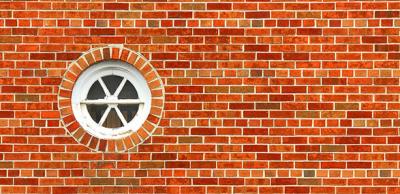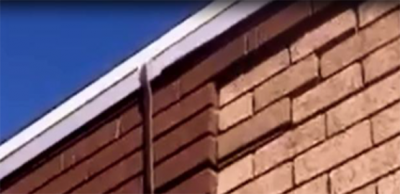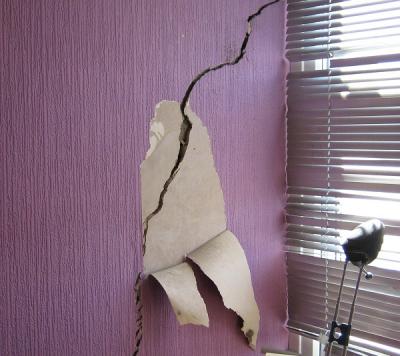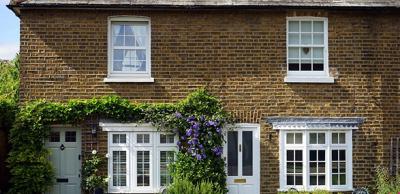Retaining wall basics
Retaining walls can be tricky to build as they need to be strong enough to resist horizontal soil pressure where there are differing ground levels.
One of the things you must get right is the thickness of the wall. It should be at least 215mm thick and bonded or made of two separate brick skins tied together.
This should be enough in most cases with minimal water pressure or where the ground level difference is less than a metre.
You also need to consider the effect of ground water, which can create huge pressure on the wall and soak the brickwork if allowed to accumulate behind. Create a way out for the water by adding a gravel trench and pipes through the wall.
If not properly constructed, water can also penetrate the brickwork structure from above through the mortar joints, affecting the long-term durability of the retaining wall. So add brick copings, which must always be F2, S2 (frost-resistant low soluble salts), with an overhang and drip groove to minimise water damage.
Important points about retaining walls
- Don't forget to include movement joints in the wall and use piers on either side to increase strength at the movement joint position.
- If you're using two separate brick skins in stretcher bond, you have to provide reinforcement by tying them together. Use stainless steel bed-joint reinforcement every third course to boost the strength.
- Use a high-bond damp proof course below the capping/coping and sandwich the DPC in mortar.
- Waterproof the retaining side of the wall and allow water to drain away from this side through weep holes/pipes.
- Slope paving away from the wall and provide gravel drainage strips where possible.
- Don't forget to protect waterproofing from damage while you’re building.
- Don't build higher than one metre without involving a structural engineer.
Want to find out more about this type of work? Visit these links:
- Brick Development Association
- The do's and don'ts of freestanding brick walls
- The danger of free-standing walls
- Wall repair basics
- How to get it right: Supporting joists on external walls
Please Note: Every care was taken to ensure the information was correct at the time of publication. Any written guidance provided does not replace the user’s professional judgement. It is the responsibility of the dutyholder or person carrying out the work to ensure compliance with relevant building regulations or applicable technical standards.
Sign up to the building bulletin newsletter
Over 48,000 construction professionals have already signed up for the LABC Building Bulletin.
Join them and receive useful tips, practical technical information and industry news by email once every 6 weeks.
Subscribe to the Building Bulletin





Comments
Rebuilding Block retaining wall
Submitted 4 years 8 months ago
Is there anyone who can recommend a competent brick/block layer to do this work correctly, and include drainage through and behind the wall. The wall seems to be constructed of single course dense concrete block at present... thank you fir your assistance
Reply
Submitted 4 years 8 months ago
I'm afraid we're unable to recommend tradespeople but your local authority building control team may be able to give you some guidance. You can find their details by entering your postcode into the postcode search at the top of this page.
Kind regards
Julie, LABC
Does a retaining wall *require* drain holes?
Submitted 4 years 7 months ago
Footing
Submitted 4 years 7 months ago
I have a garden which is tiered to the back by 2ft in height.
It had a shoddy retaining brick wall with inadequate footing which consisted of a 2 inch mortar bed and as a result has failed.
I’m in the process of taking down the wall and cleaning off the bricks to rebuild, what depth footing would you recommend for a wall of this small size?
Retaining Wall Guarding
Submitted 4 years 6 months ago
Retaining wall fear it might collapse
Submitted 4 years 6 months ago
UNILOG retaining wall
Submitted 4 years 5 months ago
Reply
Submitted 4 years 5 months ago
If you propose to undertake a retaining wall as part of any building work covered by the building regulations we would always recommend that you seek appropriate professional advice from a suitably qualified structural engineer who will be able to advise regarding bespoke solutions.
Kind regards
Martin, LABC
Distances from House Retaining Wall
Submitted 4 years 5 months ago
Existing wall
Submitted 4 years 4 months ago
Add new comment